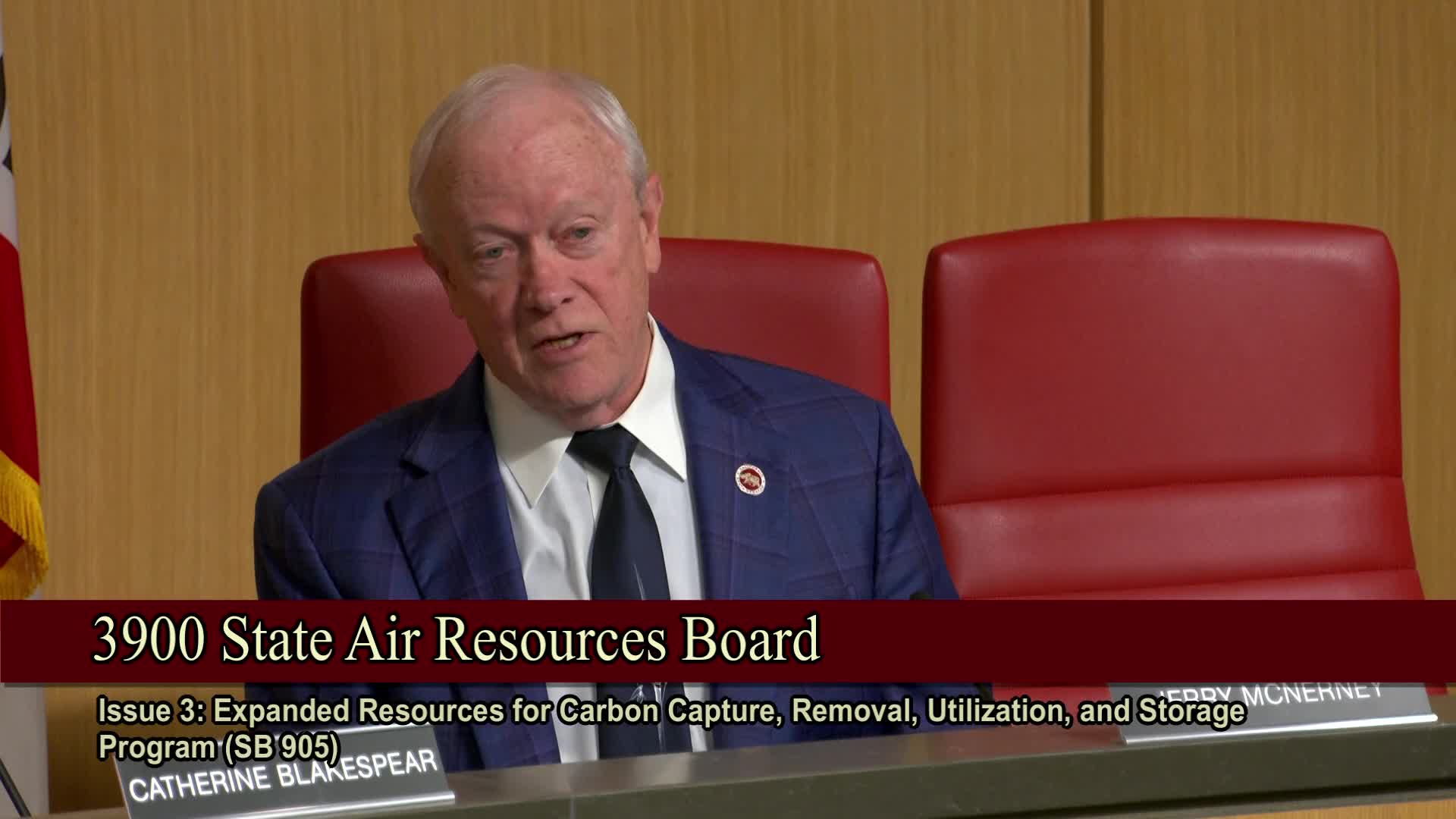California to expedite carbon capture regulations while addressing staffing challenges
May 01, 2025 | California State Senate, Senate, Legislative, California
This article was created by AI summarizing key points discussed. AI makes mistakes, so for full details and context, please refer to the video of the full meeting. Please report any errors so we can fix them. Report an error »

In a recent meeting of the Senate Budget and Fiscal Review Subcommittee No. 2, California lawmakers gathered to discuss the pressing issue of carbon capture, utilization, and storage (CCUS) technologies. The atmosphere was charged with urgency as officials acknowledged the critical role these technologies play in the state’s ambitious climate goals.
The conversation began with a recognition of the lengthy regulatory process, which can take three to four years. This timeline has raised concerns among stakeholders eager to advance projects that could significantly reduce carbon emissions. A representative from the California Air Resources Board (CARB) emphasized the importance of moving swiftly, noting that while foundational work is underway, the actual rule-making process has yet to begin due to staffing shortages.
California has been proactive in fostering a supportive policy environment for CCUS projects, bolstered by federal tax credits and grants. However, the lack of permanent staffing has hindered progress. The CARB representative expressed a desire to attract qualified personnel to expedite the regulatory framework necessary for these projects, which are essential for achieving the state’s carbon neutrality goals.
The subcommittee also highlighted the importance of community engagement in the regulatory process. As new projects are proposed, local residents must be assured of their safety and the environmental integrity of the initiatives. The CARB is committed to conducting public workshops and soliciting feedback to ensure that community concerns are addressed.
In response to inquiries about research and development, it was revealed that CARB has contracted with Lawrence Livermore National Lab to conduct technology assessments. This partnership aims to inform future regulations and ensure that California remains at the forefront of CCUS innovation.
As the meeting concluded, it was clear that while significant strides are being made in the realm of carbon capture and storage, the path forward is complex and requires careful navigation of regulatory, technological, and community considerations. The urgency of the discussions underscored the critical need for timely action as California strives to meet its environmental commitments.
The conversation began with a recognition of the lengthy regulatory process, which can take three to four years. This timeline has raised concerns among stakeholders eager to advance projects that could significantly reduce carbon emissions. A representative from the California Air Resources Board (CARB) emphasized the importance of moving swiftly, noting that while foundational work is underway, the actual rule-making process has yet to begin due to staffing shortages.
California has been proactive in fostering a supportive policy environment for CCUS projects, bolstered by federal tax credits and grants. However, the lack of permanent staffing has hindered progress. The CARB representative expressed a desire to attract qualified personnel to expedite the regulatory framework necessary for these projects, which are essential for achieving the state’s carbon neutrality goals.
The subcommittee also highlighted the importance of community engagement in the regulatory process. As new projects are proposed, local residents must be assured of their safety and the environmental integrity of the initiatives. The CARB is committed to conducting public workshops and soliciting feedback to ensure that community concerns are addressed.
In response to inquiries about research and development, it was revealed that CARB has contracted with Lawrence Livermore National Lab to conduct technology assessments. This partnership aims to inform future regulations and ensure that California remains at the forefront of CCUS innovation.
As the meeting concluded, it was clear that while significant strides are being made in the realm of carbon capture and storage, the path forward is complex and requires careful navigation of regulatory, technological, and community considerations. The urgency of the discussions underscored the critical need for timely action as California strives to meet its environmental commitments.
View full meeting
This article is based on a recent meeting—watch the full video and explore the complete transcript for deeper insights into the discussion.
View full meeting
